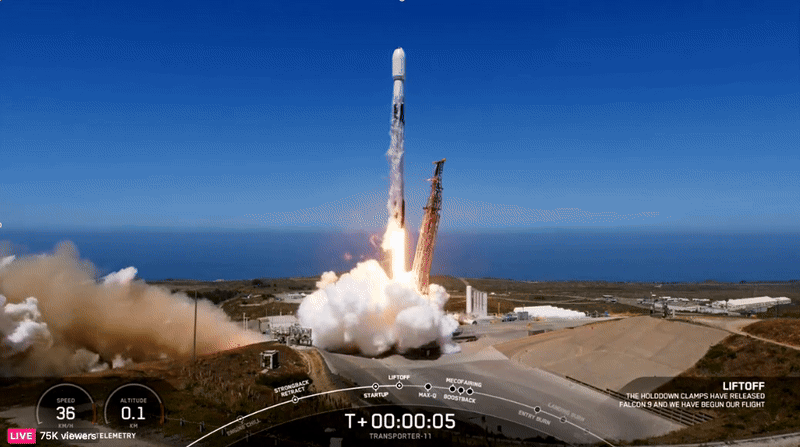
While most AI processing occurs on the ground after the data has been downloaded, ESA’s Φsat-2 satellite will do this in real-time. Instead of downlinking large amounts of raw data, including those obscured by clouds, the onboard apps can process these images directly, ensuring that only the most essential information is sent back to Earth. This innovation gives tangible benefits enhances data transmission and accelerates decision making.
Orbiting Earth at an altitude of 510 km, the satellite’s multispectral camera images Earth in seven different bands in the visible to near-infrared part of the electromagnetic spectrum. The 6U Cubesat platform, designed and developed by OpenCosmos, runs AI apps that can be easily installed and operated remotely from Earth.
These apps can provide actionable data for environmental protection and set a new standard in space-based AI technology. At launch, Φsat-2 runs the following apps on board:
Cloud detection
Unlike traditional satellites that downlink all captured images, including those obscured by clouds, Φsat-2 processes these images directly in orbit, ensuring that only clear, usable images are sent back to Earth.
Developed by KP Labs, this application can also classify clouds and provide insights into cloud distribution. This gives users more flexibility when it is time to decide whether an image is usable or not.
Street map generation
The Sat2Map application, developed by CGI, converts satellite imagery into street maps. This capability is particularly beneficial for emergency response teams, enabling them to identify accessible roads during disasters such as floods or earthquakes.
When the satellite orbits over the affected area and acquires images, the images are passed to the onboard processer that will identify streets and generate a corresponding map.
Initially, this application will be demonstrated over Southeast Asia, showcasing its potential to aid in crisis management.
Maritime vessel detection
The maritime vessel detection application, developed by CEiiA, utilises machine learning techniques to automatically detect and classify vessels in specified regions, facilitating the monitoring of activities like illegal fishing. This application underscores the satellite’s role in supporting maritime security and environmental conservation efforts.
On-board image compression and reconstruction
Developed by GEO-K, this application is responsible for compressing images on board. By significantly reducing file sizes, this application increases the volume and speed of data downloads. After being downlinked to the ground, the images are reconstructed using a dedicated decoder. The first demonstrations of this technology will occur over Europe, focusing on the detection of buildings.
To further expand the satellite’s capabilities, two additional apps will be uploaded now that the satellite is in orbit. These are:
Marine anomaly detection
Developed by IRT Saint Exupery Technical Research, this application uses machine learning algorithm to spot anomalies in marine ecosystems – identifying threats to the marine ecosystem such as oil spills, harmful algae blooms and heavy sediment discharges in real-time.
Wildfire detection
The wildfire detection system, developed by Thales Alenia Space, uses machine learning to provide critical real-time information to response teams. The tool provides a classification report that helps firefighters locate wildfires, track fire spread and identify potential hazards.
Φsat-2 is a collaborative effort, with Open Cosmos as the prime contractor, supported by an industrial consortium including CGI, Simera, Ubotica, CEiiA, GEO-K and KP-Labs.



